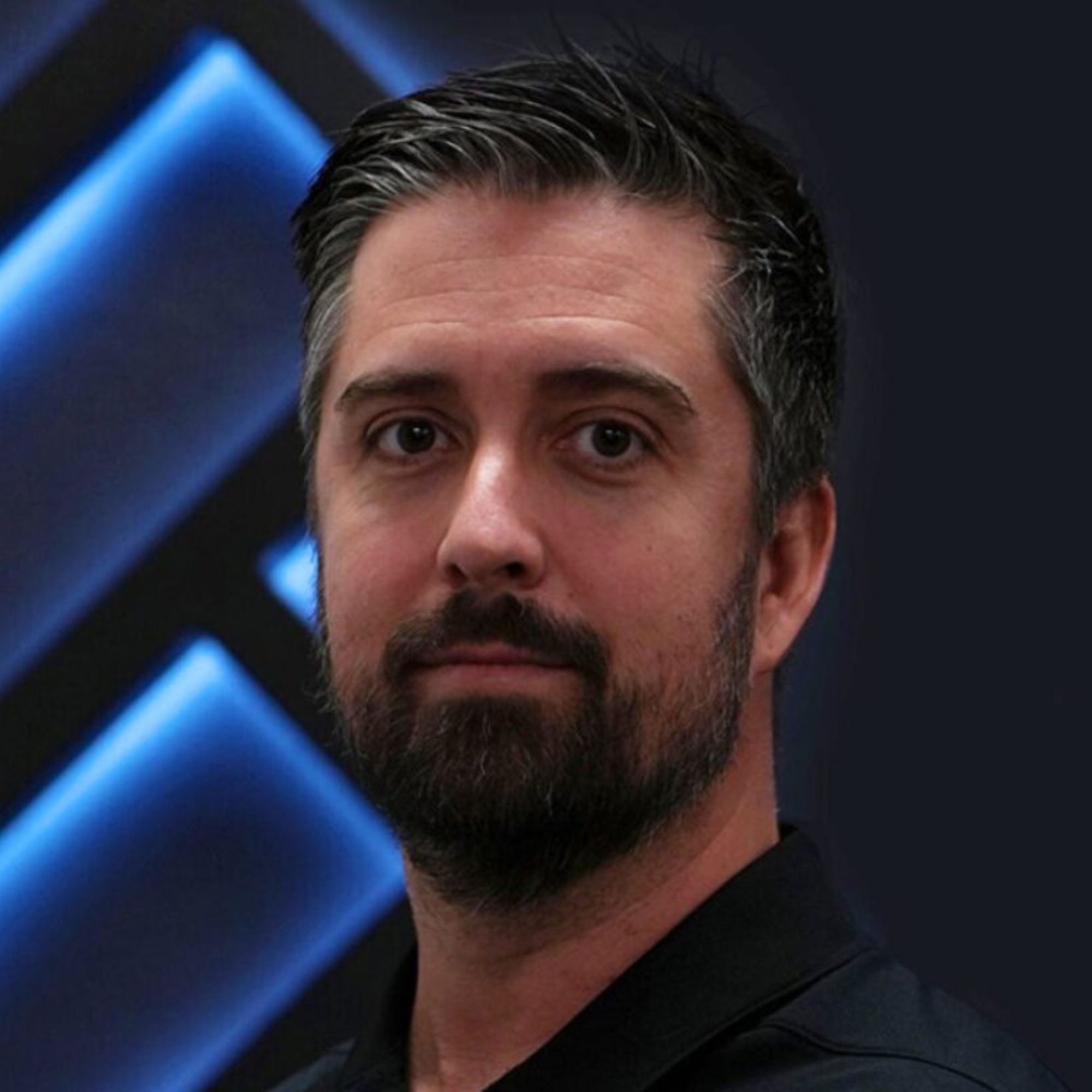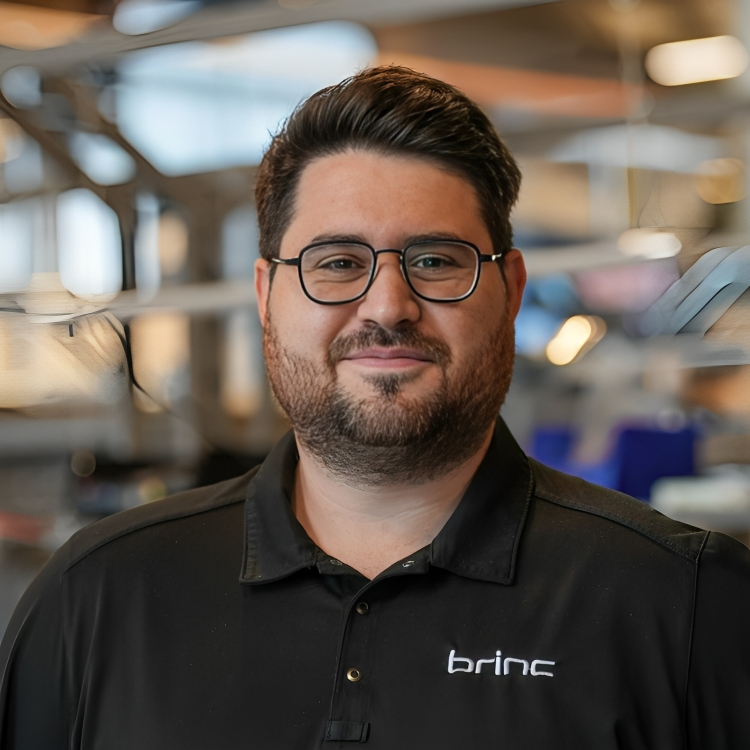Ready to build your own Founder-Led Growth engine? Book a Strategy Call
Frontlines.io | Where B2B Founders Talk GTM.
Strategic Communications Advisory For Visionary Founders
Actionable
Takeaways
Eliminate the telephone game between engineers and operators:
The traditional path through program offices creates a destructive translation layer. Claire's tactical advice: "Put the engineer with the end user and connect that thread with the company and the echelons of command. Let the engineer and the end user just work and iterate on a problem." When engineers understand the actual workflow—like analysts processing 3,000 intelligence reports in 24-hour cycles—they identify implementation opportunities program offices miss. Defense tech founders should structure early sales around direct technical conversations with operators, not procurement intermediaries.
Sell risk mitigation, not cost savings:
Government budget dynamics fundamentally differ from enterprise SaaS. Claire's framework: "Defense has a big budget. Economic value is not the priority. Risk is the priority. Reducing risk to our frontline operators and reducing risk as a nation that we don't want to create kinetic effects where we don't need to." Founders must reposition their value proposition from efficiency gains to operational risk reduction, decision-making accuracy under ambiguity, and preventing escalation to kinetic conflict. This reframing changes everything from pitch decks to pricing models.
Build unit-level demand before pursuing acquisition vehicles:
The top-down approach through program offices optimizes for legacy procurement timelines. Claire's grassroots strategy: "Now at the unit level, they are starting to get excited about developing this requirement. I think it's about getting out and having a grassroots effort." She pitched at the Army's ISR office at DEFCON, bypassing traditional channels. Founders should target DOD innovation competitions, attend conferences where operators gather, and generate testimonials from end users that cascade up to program offices rather than negotiating downward from procurement.
Structure pilots to validate mission impact, not just technical feasibility:
Claire warns against the "$100 million contract and five years from now deliver a ship that sinks" trap. Her approach: "You want to start and develop very finely those use cases and fine tune to the user and the operator. Starting with that good solid pilot or proof of concept is critical so that what you're developing is actually going to meet a mission need." Founders should design pilots that demonstrate measurable risk reduction with specific units, document operator feedback throughout iteration cycles, and use validated mission impact as the basis for scaling conversations.
Establish mission credibility alongside technical credibility:
Trust dynamics in defense differ from commercial enterprise sales. Claire's perspective after 25 years in national security: "Go meet with your end user and actually care about them and care about what it is that they're trying to work through. I think some of it needs to come from a sense of patriotism and mission." Founders purely focused on TAM and revenue multiples will struggle to build relationships with operators who risk their lives using these tools. Understanding the mission context—counterterrorism operations, tactical intelligence workflows, battlefield decision cycles—is non-negotiable for sustained success.
Conversation
Highlights
How Defense Tech Sales Actually Works: 25 Years Inside the Intelligence Community
Most defense tech founders approach government sales the same way they’d approach enterprise SaaS: identify decision-makers in program offices, navigate procurement pathways, and wait for RFPs. Claire Buffington spent 25 years on the other side of that equation, and she’ll tell you that’s exactly why most startups fail to gain traction.
In a recent episode of The Defense Tech Front Lines, Claire, Defense and Operations Manager at OpenInfer, shared what actually works when selling technology to the government—and why the conventional playbook misses the mark entirely.
The Translation Problem Nobody Talks About
After serving as a Marine Corps intelligence officer, working at the National Counterterrorism Center, and eventually becoming chief of staff at the Office of the Director of National Intelligence, Claire saw the same pattern repeat: defense tech companies would develop solutions in isolation, never speaking directly with the operators who’d actually use their products.
“I think that you oftentimes I wouldn’t even get the chance to talk to somebody at the private company level,” Claire explained. “We should be having those dialogues. If we said, hey, we have a requirement for a piece of technology that can perform X function, we should be doing that in conjunction with the developer of the tech, not developing our own use case and reverse engineering the tech when we’re not the technical experts.”
This disconnect creates a destructive game of telephone. Program offices translate operator needs into requirements documents. Companies build to those specifications. By the time the solution reaches the field, it solves yesterday’s problem—or worse, no real problem at all.
When Claire joined OpenInfer after leaving government in March, she brought a different approach: eliminate the intermediaries entirely.
Why The Strategic Cascade Matters More Than You Think
Understanding how policy translates into purchasing decisions requires mapping what Claire calls the strategic cascade. When the White House releases an AI strategy, it doesn’t immediately become a procurement vehicle. Instead, it flows downward through layers of bureaucracy, each translating high-level guidance into operational requirements.
“You have the national level strategy and then you have the service level strategy, and then you have the unit level strategy,” Claire noted. “Nothing is just decided in a vacuum in defense. You have strategic level guidance that transitions down to department or service level guidance and that is translated into budgets.”
Most startups target the wrong layer. They pitch program offices in the Pentagon, assuming that’s where buying decisions happen. But the actual shift is occurring at the unit level, where operators are finally getting autonomy to develop their own requirements.
“Now at the unit level, they are starting to get excited about, oh, we’re going to get to develop this requirement. This is our issues. I wonder if there’s something for AI to solve for my particular unit,” Claire said.
This creates an opening for companies willing to take a grassroots approach. Rather than waiting for solicitations through traditional contracting vehicles, OpenInfer engages directly with units, building demand from the bottom up.
The DEFCON Pitch That Changed Everything
Claire’s approach crystallized at DEFCON in Las Vegas, where she pitched to the Army’s Intelligence, Surveillance and Reconnaissance office on AI and edge technology. It was a hackers conference—not a typical venue for government acquisition—but that’s precisely the point.
“I love that the services are putting themselves out there into these public spaces and trying to grow engagement at that level,” she said. “So I’ve been taking a really grassroots approach. You can wait for solicitations through contracting vehicles, or you can go out there and generate interest at the user level.”
The results speak for themselves. “We’re seeing a shift and we’re coming upon the fiscal year changeover. We talked to people three or four weeks ago who were like, yeah, we’d be really interested in that. And now they’re like, hey, can we have that conversation now? They’re getting really excited about it.”
Reframing Value From Economics to Risk
Perhaps the most fundamental mistake defense tech founders make is applying commercial enterprise value metrics to government sales. In SaaS, you sell ROI: cost savings, efficiency gains, revenue impact. In defense, that framework doesn’t translate.
“When you’re talking about defense, defense has a big budget. It’s not that money doesn’t matter, but defense has a big budget and economic, pure economic value in that sense is not the priority. Risk is the priority,” Claire explained. “Reducing risk to our frontline operators and reducing risk in terms of as a nation that we don’t want to create kinetic effects where we don’t need to.”
This reframing changes everything—pitch decks, pricing models, success metrics. Instead of promising to save analyst time, OpenInfer positions their technology around enabling better inference from open source information, potentially preventing conflict escalation.
Claire described a typical intelligence workflow to illustrate the point: “I have to read 3,000 intelligence reports and I have to pick out the top 30 of those and then I have to write summaries and I have to submit a report that is going to dictate what somebody on the battlefield is going to do. How long is that going to take you? This is a 24 hour cycle. How many people? Like six or seven people.”
The value isn’t the time saved. It’s the risk reduced when decision-makers have better information faster.
The Engineer-Operator Connection
The shift toward rapid acquisition pathways in defense creates a structural opportunity, but only for companies willing to operate differently. Traditional procurement—”give hundreds of millions of dollars to the big companies and let them go solve our problems”—delivers solutions years late and often irrelevant by deployment.
“We’re not solving tomorrow’s problems, we’re solving yesterday’s problems now. And we’re trying to iterate on those quickly because the pace of tech is so fast right now,” Claire said.
The alternative requires direct collaboration between technical builders and tactical operators. “Put the engineer with the end user and then connect that thread with the company and with the echelons of command. Let the engineer and the end user just work and iterate on a problem. Once you break down that game of telephone, they can just rapidly get excited about what they’re building and iterate on something that’s actually going to deliver value.”
This isn’t just faster—it’s fundamentally different. When engineers understand the mission context, they identify opportunities program offices would never specify in requirements documents.
From Proof of Concept to Sustained Contract
The path from initial engagement to sustained government contract requires patience and discipline. Claire advocates for a crawl-walk-run approach that prioritizes validation over scale.
“You don’t want to jump straight to acquisition pathways. I want to make sure that this pilot is actually going to do what we say it’s going to do for you. And as we iterate along that process, we’re going to find out, well, this works or that doesn’t work or this works exceptionally well,” she explained.
The legacy procurement trap—what Claire calls the “$100 million contract and five years from now we’re going to deliver you a ship that sinks”—happens when companies optimize for contract size over mission fit. By the time sunk costs make abandonment difficult, the solution doesn’t actually address operator needs.
“Starting with that good solid pilot or even just a proof of concept is really critical so that what you’re developing is actually going to meet a mission need not some office in the Pentagon saying we need AI and we think it should look and walk and act in this particular way.”
The 50:1 Outreach Reality
The transition from 25 years in government to defense tech startup exposed Claire to a reality most founders understand but few government veterans anticipate: rejection is the norm.
“For every 50 calls you make, you might get a follow on conversation with one. I can’t tell you how many people on LinkedIn I’ve reached out to and nobody responds. But you know, it only takes one. It takes that one foot in the door. It takes that one opportunity to establish yourself as a company and to showcase what it is that you’re doing.”
This grind requires a different kind of conviction than traditional government service. But for Claire, the mission continuity makes it worthwhile. “I am super excited that I found a way to continue to contribute to that mission set, but in just a new and energizing exciting way.”
The defense tech opportunity is real—$150 trillion in new energy and defense infrastructure, shifting acquisition pathways, unit-level autonomy. But winning requires understanding how the system actually works, not how you think it should work. For founders willing to bypass program offices, connect engineers with operators, and build grassroots demand, the opportunity has never been better.























